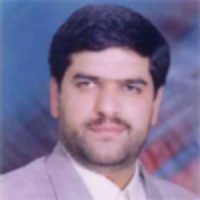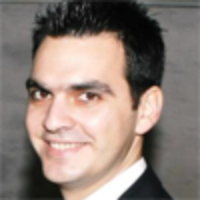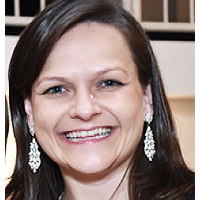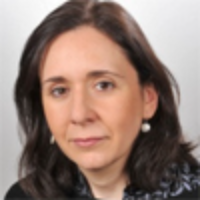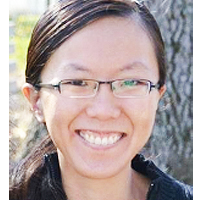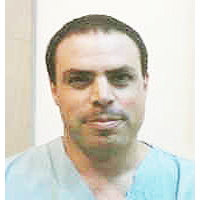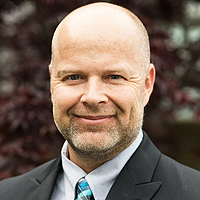Abstract
Review Article
A Belgian program to fight child maltreatment: The “SOS children” teams
Sophie Dechêne* and Emmanuel de Becker
Published: 08 August, 2019 | Volume 3 - Issue 1 | Pages: 032-041
Child abuse remains a complex issue affecting individuals, families, groups and society, and one which WHO prevalence figures show as a significant ongoing problem. The nature of the abuse, be it physical, sexual, psychological, or neglect, places the child at high risk of experiencing the multiple sequelae of the trauma. Depending on the child’s country, the disclosure of abuse by the child or a third party will either be moved into criminal justice system or directed to the medico-psycho-social sector.
In 1985, in Belgium, specialist teams were established to evaluate and support situations involving child abuse. More than thirty years later, we considered it opportune to update the parameters that our team has developed based on four reflexive themes. The first discusses the transformation of our society, families and individuals, exploring how each influences the others. The second theme describes the diagnostic process, holding in mind the complexity of any situation. The third theme describes the reasoning behind these teams, considering this as a de-judicialisation of such situations. Finally, we describe the different treatments available. This paper describes the evolution of clinical practice including developments in several aspects that have arisen through handling situations of abuse.
Read Full Article HTML DOI: 10.29328/journal.apmh.1001008 Cite this Article Read Full Article PDF
Keywords:
Abuse; Sexual abuse; Multi-disciplinary; Negligence; Network
References
- De Becker E, Marie AM. Le devenir de l’enfant victime de maltraitance sexuelle. Annales Médico-Psychologiques. 2015; 173: 805-814.
- Hayez JY, Emmanuel de B. L’enfant victime d’abus sexuel et sa famille. Evaluation et traitements. Paris: PUF. 1997.
- Haesevoets YH. Regard pluriel sur la maltraitance des enfants (Kluwer Ed.). Belgique. 2003.
- Haesevoets YH. L'enfant victime d'inceste. De la séduction traumatique à la violence sexuelle: De Boeck. 2015.
- Kempe RS, Henry et Ruth. L’enfance torturée. Bruxelles Mardaga. 1978.
- Strauss PMM, et al. L’enfant maltraité. Paris: Fleurus.1982.
- Furniss T, Bingley-Miller L, Bentovim A. Therapeutic approach to sexual abuse. Arch Dis Child. 1984; 59: 865-870. PubMed: https://www.ncbi.nlm.nih.gov/pmc/articles/PMC1628703/
- Sgroi SM. l’agression sexuelle et l’enfant. Trécarré Saint-Laurent Canada. 1986.
- Colette-Basecqz N. Le secret professionnel face a’ l’enfance maltraitée. Annales de Droit de Louvain. 2002; 62: 3-30.
- Robin P. L’évaluation de la maltraitance: comment prendre en compte la perspective de l’enfant? (PUR Ed.). Rennes. 2013.
- Ehrenberg A. La Société du malaise. Paris: Odile Jacob. 2012.
- Braconnier A. Optimiste (Odile Jacob ed.). Paris. 2015.
- Bonnet G. La perversion, se venger pour survivre. Paris. 2008.
- Barbier D. La fabrique de l’homme pervers. Paris: Odile Jacobs. 2013.
- Nazare-Aga I. 2004.
- Berger M. Voulons-nous des enfants barbares? Paris Dunod. 2008.
- Lebrun JP. Un monde sans limite. Paris: Eres. 2011.
- Odebrecht S, Maria Angelica EW, Watanable MAE, Morimoto HK, Moriya AR, et al. The impact of childhood sexual abuse on activation of immunological and neuroendocrine response. Aggression and Violent Behavior. 2010; 15: 440-445.
- Schraufnagel TJ, Kelly CD, George WH, Norris SJ. Childhood sexual abuse in males and subsequent risky sexual behaviour: A potential alcohol-use pathway. Child Abuse Negl. 2010; 34: 369-378.
- Trickett PK, Noll JG., Putnam FW. The impact of sexual abuse on female development: Lessons from a multigenerational, longitudinal research study. Dev Psychopathol. 2011; 23: 453-476. PubMed: https://www.ncbi.nlm.nih.gov/pubmed/23786689
- Barudy D. De la bientraitance infantile. France: Fabert. 2007.
- Hayez JY, Emmanuel de B. La parole de l’enfant en souffrance: accueillir, évaluer et accompagner. Paris: Dunod. 2010.
- Parret C. Accompagner l’enfant maltraité et sa famille. Paris: Dunod. 2006.
- Berger M, Emmanuel de B, Nathalie C. L’abus sexuel intrafamilial: discussion médico-psycho-juridique sur la pertinence du modèle de prise en charge. Acta Psychiatrica Belgica. 2015; 1 : 24-31.
- Monzee J. psychothérapie du développement affectif de l’enfant: Liber. 2014.
- Ogloff JRP, CM C, Mann E, Mullen P. Child sexual abuse and subsequent offending and victimisation: A 45 year follow-up study. Trends and Issues in Crime and Criminal Justice. 2012; 440.
- Berlin JL, Appleyard K, Dodge KA. Intergenerational continuity in child maltreatment mediating mechanisms and implications for prevention. Child Dev. 2011; 82: 162-176. PubMed: https://www.ncbi.nlm.nih.gov/pubmed/21291435
- Godelier M. Métamorphoses de la parenté: Fayard. 2004.
- Cirillo S. Mauvais parents: comment leur venir en aide? France: Fabert. 2006.
Figures:
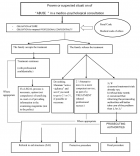
Figure 1
Similar Articles
-
A Belgian program to fight child maltreatment: The “SOS children” teamsSophie Dechêne*,Emmanuel de Becker. A Belgian program to fight child maltreatment: The “SOS children” teams. . 2019 doi: 10.29328/journal.apmh.1001008; 3: 032-041
-
Adverse childhood experiences and their Alcohol, and chat Consumption among school-going adolescents, Ethiopia: Cross-sectional studyMekonnen Tsehay*,Mogesie Necho,Asmare Belete,Werkua Mekonnen. Adverse childhood experiences and their Alcohol, and chat Consumption among school-going adolescents, Ethiopia: Cross-sectional study. . 2020 doi: 10.29328/journal.apmh.1001025; 4: 076-083
-
Factors of the grandparent conditions to take care of a child born accidentally in environmental health through their raising sexuality adolescence behaviours toward their abusing and neglecting from teenage parentsJirawon Tanwattanakul*,Sriveing Pairojkul,Peerasit Kamnuansilpa,Wanapa Sritanyaratana,Toansakul Tony Santiboon. Factors of the grandparent conditions to take care of a child born accidentally in environmental health through their raising sexuality adolescence behaviours toward their abusing and neglecting from teenage parents. . 2021 doi: 10.29328/journal.apmh.1001033; 5: 033-041
-
The role of denial on emotional correlates of childhood trauma in a non-clinical populationSanja Krvavac*,Billy Jansson. The role of denial on emotional correlates of childhood trauma in a non-clinical population. . 2022 doi: 10.29328/journal.apmh.1001043; 6: 040-047
-
Approaching Mental Health Through a Preventive Data Analysis PlatformGabriel F Pestana, Olga Valentim*. Approaching Mental Health Through a Preventive Data Analysis Platform. . 2024 doi: 10.29328/journal.apmh.1001052; 8: 020-027
Recently Viewed
-
Fairness at a Cost: The Hidden Dangers of Steroid-Based Skin LightenersManahil Mubeen*,Wania Bint-e-Shahzad,Laiba Azeem,Iflah Noor. Fairness at a Cost: The Hidden Dangers of Steroid-Based Skin Lighteners. J Community Med Health Solut. 2025: doi: 10.29328/journal.jcmhs.1001062; 6: 077-079
-
Advances in deep learning-based cancer outcome prediction using multi-omics dataAndrew Zhou, Charlie Zhang, Okyaz Eminaga*. Advances in deep learning-based cancer outcome prediction using multi-omics data. Ann Proteom Bioinform. 2023: doi: 10.29328/journal.apb.1001020; 7: 010-013
-
Evaluation of the Social Return on Investment (SROI) in Patients with Hepatitis C. The Case of the Mobile Outreach Program (MOP)Paulo Lopes, Georg Dutschke*, Cláudia Pereira, Elsa Belo, Diogo Morais, Paulo Caldeira, Filipa Barata, Emília Leitão, R Tato Marinho, Paula Peixe, José Vera, Rodrigo Coutinho. Evaluation of the Social Return on Investment (SROI) in Patients with Hepatitis C. The Case of the Mobile Outreach Program (MOP). J Addict Ther Res. 2024: doi: 10.29328/journal.jatr.1001029; 8: 009-015
-
Drug Abuse and Mental Illness in Erigavo Mental Hostiptal, Erigavo, SomaliaMuna Mohamed Hassan, Shamsa Muse Ahmed, Hassan Abdillahi Duale*. Drug Abuse and Mental Illness in Erigavo Mental Hostiptal, Erigavo, Somalia. J Addict Ther Res. 2024: doi: 10.29328/journal.jatr.1001030; 8: 016-023
-
Patient’s perception of the benefits of long-term opioids: Reinforcement associated with short-term effectsJames P Robinson*. Patient’s perception of the benefits of long-term opioids: Reinforcement associated with short-term effects. J Addict Ther Res. 2023: doi: 10.29328/journal.jatr.1001026; 7: 008-011
Most Viewed
-
Feasibility study of magnetic sensing for detecting single-neuron action potentialsDenis Tonini,Kai Wu,Renata Saha,Jian-Ping Wang*. Feasibility study of magnetic sensing for detecting single-neuron action potentials. Ann Biomed Sci Eng. 2022 doi: 10.29328/journal.abse.1001018; 6: 019-029
-
Evaluation of In vitro and Ex vivo Models for Studying the Effectiveness of Vaginal Drug Systems in Controlling Microbe Infections: A Systematic ReviewMohammad Hossein Karami*, Majid Abdouss*, Mandana Karami. Evaluation of In vitro and Ex vivo Models for Studying the Effectiveness of Vaginal Drug Systems in Controlling Microbe Infections: A Systematic Review. Clin J Obstet Gynecol. 2023 doi: 10.29328/journal.cjog.1001151; 6: 201-215
-
Causal Link between Human Blood Metabolites and Asthma: An Investigation Using Mendelian RandomizationYong-Qing Zhu, Xiao-Yan Meng, Jing-Hua Yang*. Causal Link between Human Blood Metabolites and Asthma: An Investigation Using Mendelian Randomization. Arch Asthma Allergy Immunol. 2023 doi: 10.29328/journal.aaai.1001032; 7: 012-022
-
An algorithm to safely manage oral food challenge in an office-based setting for children with multiple food allergiesNathalie Cottel,Aïcha Dieme,Véronique Orcel,Yannick Chantran,Mélisande Bourgoin-Heck,Jocelyne Just. An algorithm to safely manage oral food challenge in an office-based setting for children with multiple food allergies. Arch Asthma Allergy Immunol. 2021 doi: 10.29328/journal.aaai.1001027; 5: 030-037
-
Impact of Latex Sensitization on Asthma and Rhinitis Progression: A Study at Abidjan-Cocody University Hospital - Côte d’Ivoire (Progression of Asthma and Rhinitis related to Latex Sensitization)Dasse Sery Romuald*, KL Siransy, N Koffi, RO Yeboah, EK Nguessan, HA Adou, VP Goran-Kouacou, AU Assi, JY Seri, S Moussa, D Oura, CL Memel, H Koya, E Atoukoula. Impact of Latex Sensitization on Asthma and Rhinitis Progression: A Study at Abidjan-Cocody University Hospital - Côte d’Ivoire (Progression of Asthma and Rhinitis related to Latex Sensitization). Arch Asthma Allergy Immunol. 2024 doi: 10.29328/journal.aaai.1001035; 8: 007-012

If you are already a member of our network and need to keep track of any developments regarding a question you have already submitted, click "take me to my Query."















